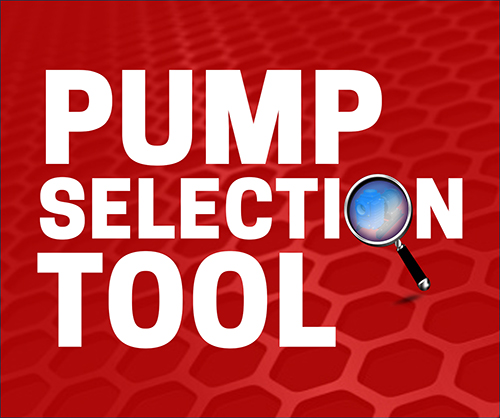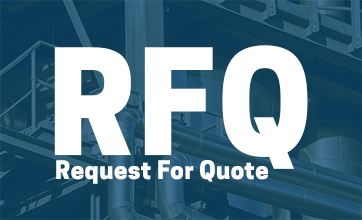Air Operated Diaphragm Pump - Troubleshooting Guide
- By Aaron Jameson
- Mar 31, 2022
Popular for oil and petroleum, petrochemical, mining, and construction industries, air-operated double diaphragm pumps use compressed air, lowering operational and maintenance costs while still providing high-quality water flow. But out at the jobsite, an air-operated double diaphragm pump not working the way you expect it to, or not functioning at all, takes time away from the job. And taking the pump in for servicing, or placing an order for new parts, or worse, a replacement pump will take even more time. Before you go out with the old and in with the new, follow our air-operated double diaphragm pump troubleshooting guide, and save yourself some time (and money).
Troubleshooting Three Common Misapplications of Air-Operated Diaphragm Pumps
Misapplication One: New facility, new piping, new air lines, new pump
Let's suppose that your facility or plant is completely new. You installed new piping, new air lines, a new compressor, new dryer, and you even made sure to include filter/regulators on the air lines. In addition, you purchased all new All-Flo pumps. But after the first few days, one pump begins to slow in performance, and quits working by the end of the week.
The Fix: On a whim, you decide to take off the air valve section, and to your surprise, it's already clogged. Were your air lines blown out after installation? Many contractors often wait to blow out lines until they're done installing, and as it's last on the last, the step often goes forgotten. Dust and small debris can easily find their way into pipes and lines in a new plant, leading to clogged air valves and decreased performance in a new setup. Purchasing a new Air End Kit–after blowing out the open lines– will prevent any downtime if there's a next time for this particular pump issue.
Misapplication Two: Pumping abrasives on a new All-Flo pump
Your plant has converted from Wilden or Yamada air-operated diaphragm pumps over to All-Flo water pumps. The 1.5" Wilden AODD was working, but it had a higher energy consumption and the total cost of ownership was increasing. Now your plant has 1.5" stainless steel All-Flo AODD pumps. The fluid you're pumping is highly abrasive and caustic, but didn't cause any issues with your previous Wilden pump, but since installing the new All-Flo pump, you're noticing a decrease in performance.
Let's get even more specific. Your old Wilden pump achieved 120 GPM at 80 PSIG, but you wanted increased efficiency, so you decided to switch to All-Flo. With the new All-Flo pump, you started out with 155 GPM at 80 PSIG, until the recent plummet in flow. The pump is also making a knocking, clanking sound mi-stroke, and sounds a bit off-kilter or asymmetric, but not all the time.
The Fix: Remove the upper manifold and inspect the ball valves. After shutting off the air, close the fluid suction valve and slightly open the air valve to flush out any fluid. After, immediately close the valve so you can disassemble the pump. After disassembly, you might notice that the balls and seats are disfigured, thus not sealing properly. In particular, one ball is considerably smaller, showing signs of corrosive decay. Although the balls are made of PTFE, the increase in fluid velocity/flow rate can cause abrasive fluids to be exponentially more caustic. To keep your All-Flo pump operating at its highest performance, turn down your flow rate to mitigate the problem (after purchasing replacement balls and seats). You can decrease your flow rate by decreasing the air pressure from a filter/regulator with an automatic drain set to a specific PSIG (which will decrease your CFM consumption rate), or by closing the suction valve slightly to decrease fluid velocity.
Misapplication Three: Condensation in diaphragm water pump air lines
Your All-Flo pump is working just fine all morning, but around noon, the pump is only pumping half the flow rate as before, and making a strange hissing sound. The pump is also causing more vibration with the pump than normal. Even though the pump line is the farthest away from your compressor, it shouldn't cause an issue because you're using a dryer in addition to the compressor.
The Fix: Remove the muffler for inspection. Even though you have a dryer on your air lines, the distance may be causing condensation in the air lines. Sometimes this distance can be quite high, five miles even! Once you inspect the muffler, you see that there's ice inside. Install a filter/regulator with an automatic drain on each air line feeding into your air-operated double diaphragm pump, and make sure to have compressors and dryers close by. As a minimum rule of thumb, the compressor and dryers should be located within the same building.


Not all problems are easy to diagnose and repair, but 90% of the regular issues we've experienced with air-operated diaphragm pumps fall into one of these three misapplication categories. The first step of any troubleshooting process? Take a moment to consider which variables might have changed since your last successful application, and start your troubleshooting from there.







